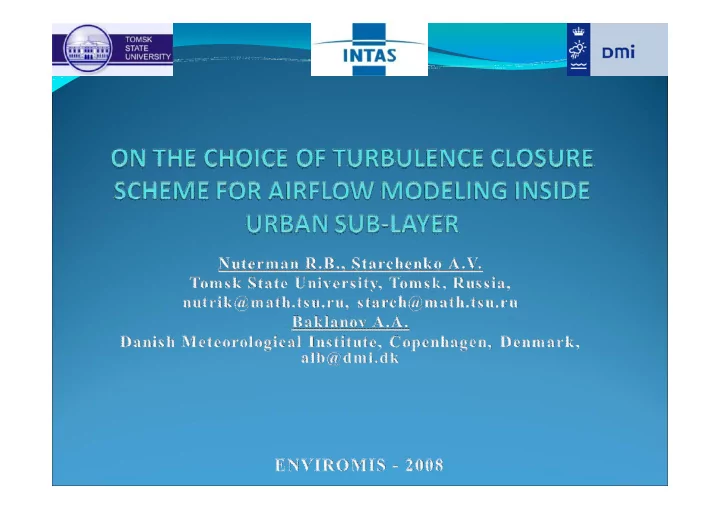

Statement of problem Street canyon 2
Mathematical statement of problem Governing equations Turbulence models •k- ε model of turbulence with Boussinesq closure assumptions (LEVM) •Non-linear eddy viscosity model (NLEVM) •Reynolds Stress Model (RSM) 3
Mathematical statement of problem Urban vegetation parameterization (Kimura et al., 2003) Governing equation Source/Sink term а - LAI Momentum equation – drag coefficient k- equation η = 1 – fraction of area covered by vegetation ε -equation Reynolds stress transport Moving traffic parameterization 1/c м /c 4
2D numerical simulation Model validation Backward facing step ( Мосс , 1982) • - experiment - LEVM - NLEVM - RSM 5
2D numerical simulation Model validation Flow past tree (Kimura et al., 2003) • - experiment - LEVM - NLEVM - RSM 6
2D numerical simulation Model validation Computation of pollution concentration in street canyon depending on flow direction (Ketzel , 2000) - experiment - calculation 7
3D micro-scale model Numerical simulation of atmosphere dynamics and traffic induced pollution for real area of Tomsk Inflow boundary conditions 8
3D micro-scale model Numerical simulation of atmosphere dynamics and traffic induced pollution for real area of Tomsk Velocity field at z = 1,5 m and volume rendering of pollution concentration 9
Conclusion 1. Unsteady micro-scale model for airflow and pollution transport modeling is developed. Numerical model is based on modern turbulence closure schemes and takes into account urban vegetation and moving transport influence. Model evaluation basing on experiments shows that «k- 2. ε » models are enough for urban aerodynamics prediction. Numerical prediction of airflow and impurity dispersion 3. for real area of city helps to determine the regions of maximum pollution. 10
THANK YOU for YOUR ATTENTION!
Recommend
More recommend